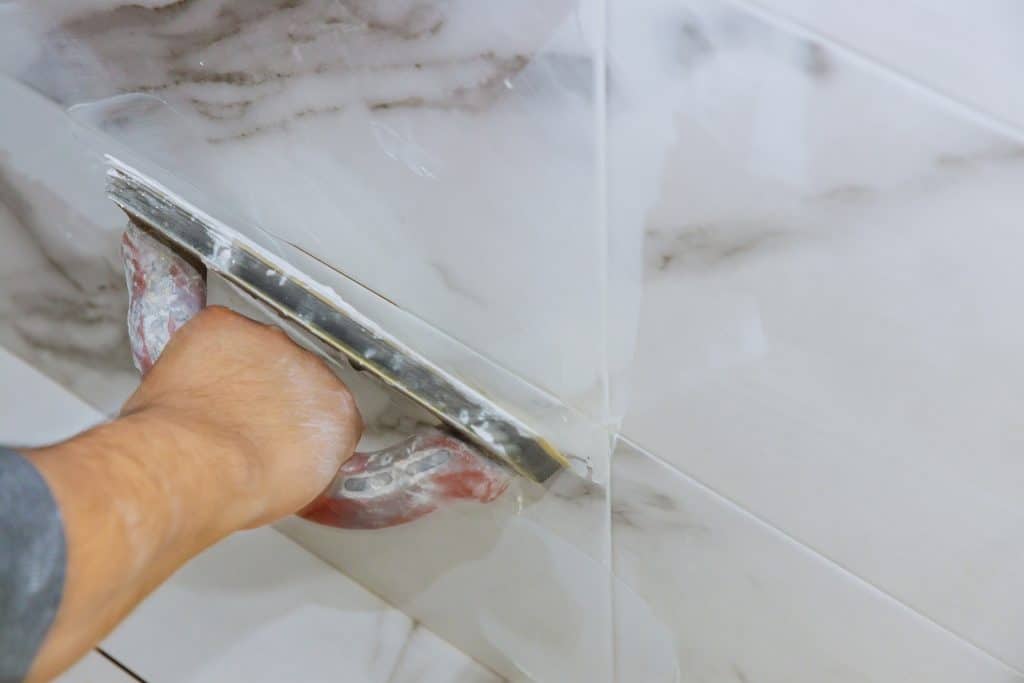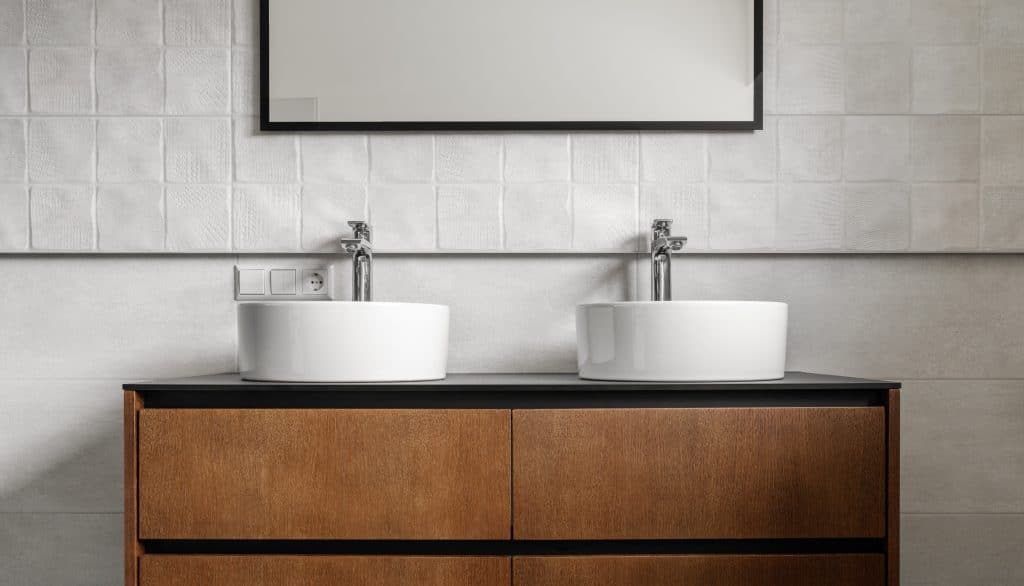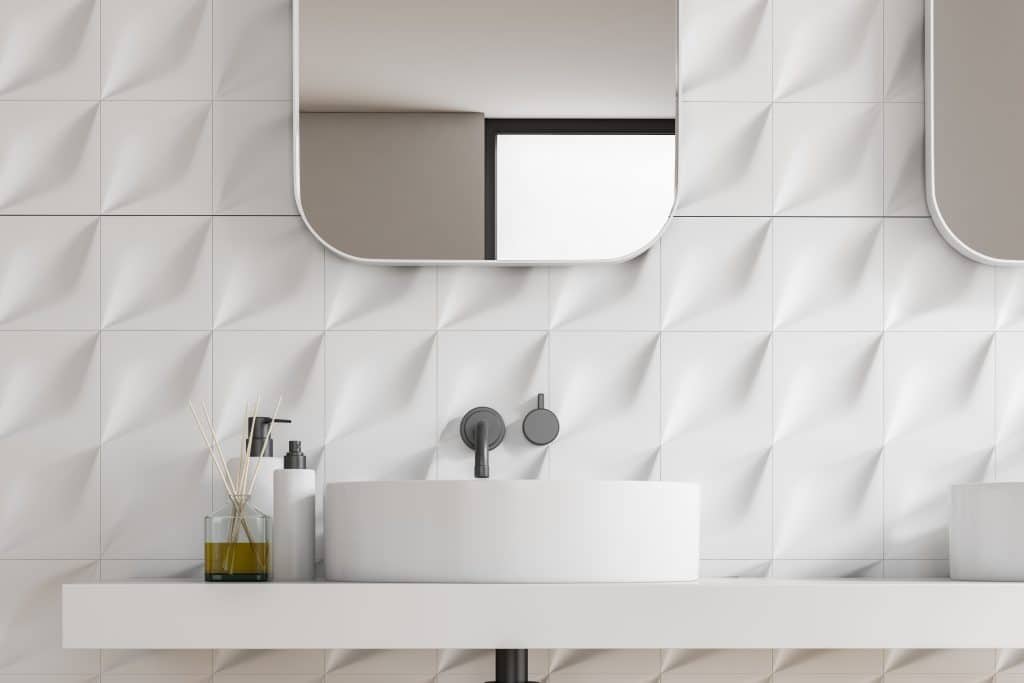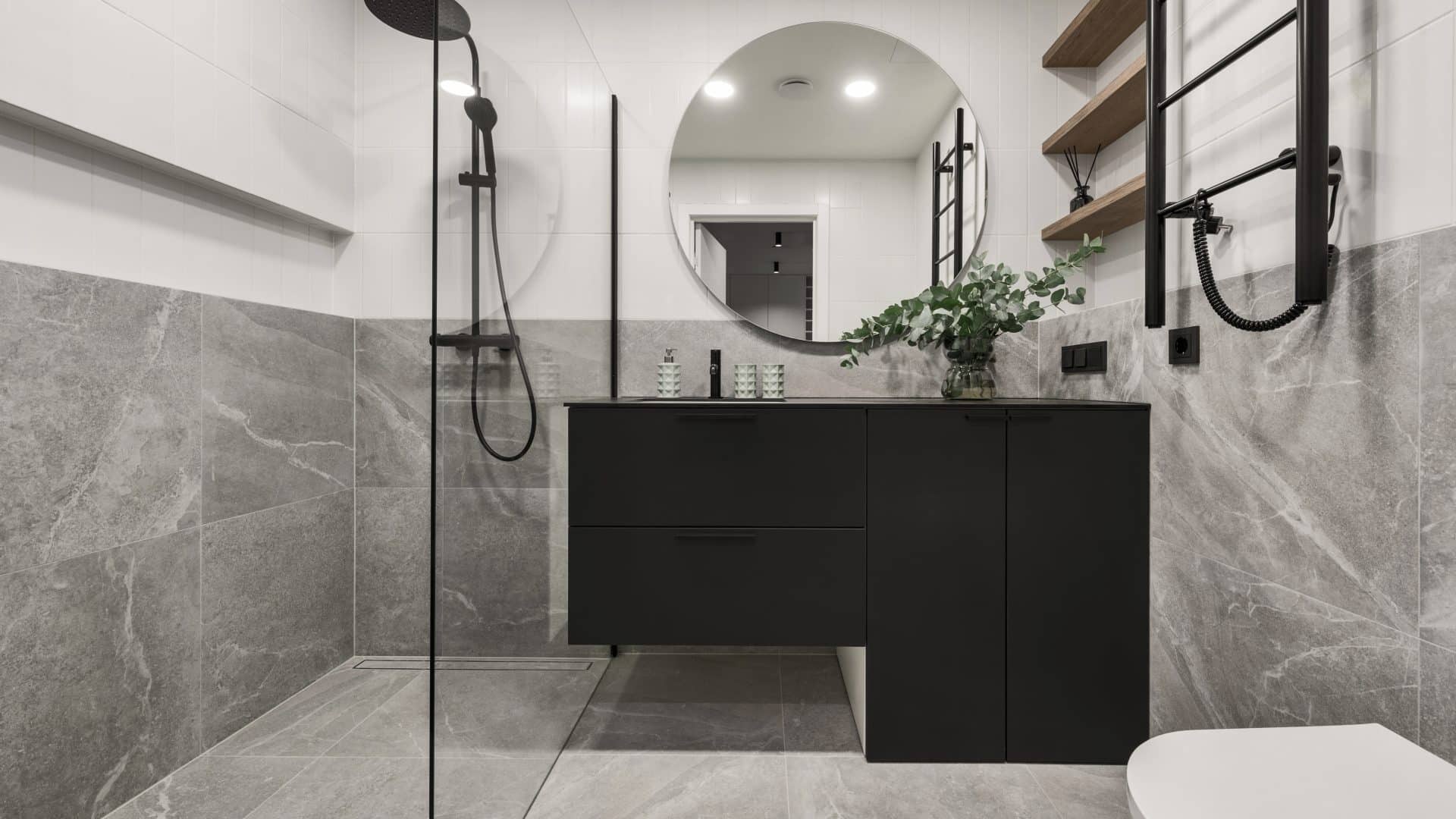Your tiles have become discoloured from water or dirt, or the grout is starting to show signs of wear and tear. Then it’s time to apply a fresh sealer to your tile grout if you’ve noticed porous grout. Let’s look more closely at what causes porosity before discussing how to stop it from happening again.
What is grout?
Grout is a mixture of cement, sand and water that is used to fill in the spaces between tiles. It comes in two forms: acrylic grout and cement grout. Cement grout is more traditional but more challenging to clean because it dries hard and can’t be stained by water or coloured dyes like acrylic does.
Since acrylic grouts are more flexible than cements, they are gentler on your hands when applying them. However, if you don’t choose an outdoor variation (which has UV protection), these products may also fade with time due to sunlight exposure.

Why is grout sealed in the first place?
You should seal your grout for several reasons. First, sealing will protect the surface of your tiles from stains and water damage. Second, it makes cleaning easier because dirt, mould and mildew won’t grow in between them as easily.
And finally, it prevents dirt buildup on top of the tile itself which can lead to discoloration over time if left untreated.

How do you pick the ideal grout sealant?
There are a few things to consider when choosing the right sealer for your grout. First, you’ll want to ensure you’re using the right type of sealer for your grout. Different types of sealers work better on different types of grout, so it’s important to know what kind of sealer you need and which type will be best suited for your situation.
Second, a sealer’s effectiveness in sealing porous tile grout depends on a number of elements, including:
- What degree of humidity is there in the room (or rooms) where this specific installation was made?
- How frequently is this room wet? Is there a high volume of foot traffic that could eventually cause moisture to seep through these areas?
- What shade is the grout or tile now? Will the colour I achieve after using this product on my surface(s) match the original?
What to look for when sealing grout?
It’s crucial to read the label before picking a sealer. Make sure the sealant is appropriate for use on tile grout and that it is the correct product before applying it. Consult with a qualified professional or contractor for guidance if you’re unsure about this.
Additionally, you should confirm whether the product is solvent- or water-based (carcinogenic). Water-based products release fewer volatile organic compounds (VOCs) into your house than solvent-based ones do, they are generally safer and kinder on the environment.
Your grout will be shielded from stains and water damage by a quality tile sealer. By using a proper tile sealer, you can stop stains, water damage, and mould from occurring. This will ensure that your grout remains attractive over many years.

What causes tile grout to be porous?
There are a lot of causes of tile grout porosity, including incorrect application and installation. Porosity can also be brought on by inadequate cleaning and water damage. The chemicals in cleaning products that contain bleach or ammonia can develop stains on your grout, so you should be careful not to keep them on the surface for too long.
Following the manufacturer’s directions precisely when placing your tiles or grout is the most typical technique to prevent porosity (always wear gloves). Before using any sealer or coating substance, make sure the surface has been cleaned; if any dirt particles are left behind, they may over time become trapped inside the grout lines as they expand due to exposure to moisture.
How can the porosity issue in tile grout be fixed?
Make sure you are using a sealer that is intended for porosity as your initial step. Grout comes in a wide variety, so it’s crucial to select one that perfectly fits yours.
Apply the sealant to the grout lines and let it to completely dry before removing any excess with a damp cloth or sponge (if any). If necessary, carry out this procedure once more to achieve the desired effect.
Before painting the walls or installing any other materials it’s crucial to seal your tiles. Tile is a sensitive material that is prone to stains and water damage, so it’s crucial to seal both your tiles and grout to preserve the longevity of your lovely new tiling project. Sealing your tiles will keep them stain-free and help them maintain their original appearance for years.
Numerous things, including incorrect application and water damage, can result in porous grout.

Like any substance, porous grout can develop for a variety of reasons. Among the most frequent causes are:
- Applying grout to your tile and/or wall surface incorrectly. Without the correct application it won’t stick properly and could eventually come loose or fall out totally.
- Failure to properly clean your walls and/or tiles once installation is complete. Before they dry up and leave behind ugly marks, you must make sure that all extra residue from tools used to apply tile glue has been cleaned up. Additionally, if there are any stains from previous occupants still present, such as cigarette smoke or drink spills, these must be entirely removed to prevent new ones from appearing when new grout is laid later on.
What can I do to keep my grout and tiles from becoming porous?
- Maintain frequent grout cleaning
- Use an antimicrobial, anti-mildew, or mildewcide-containing sealant. By doing this, you can stop mould and mildew from developing in the grout lines.

